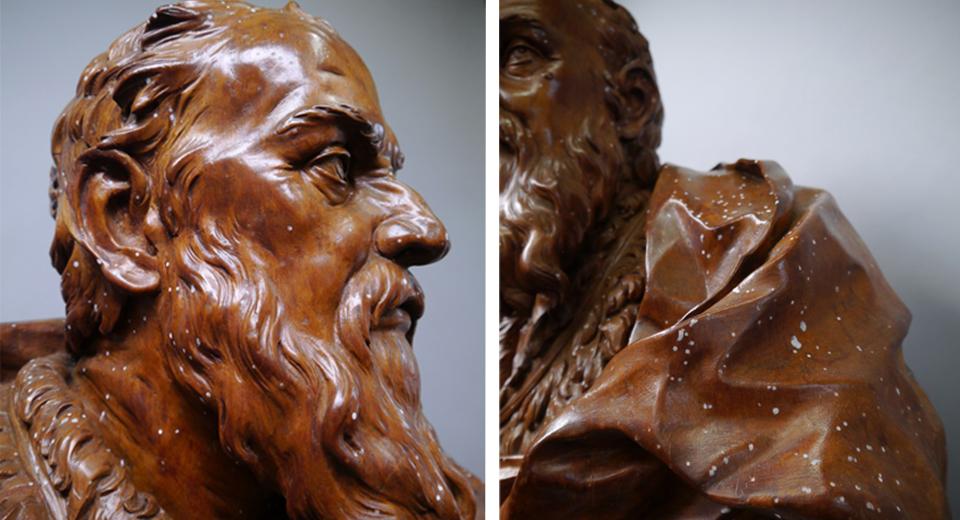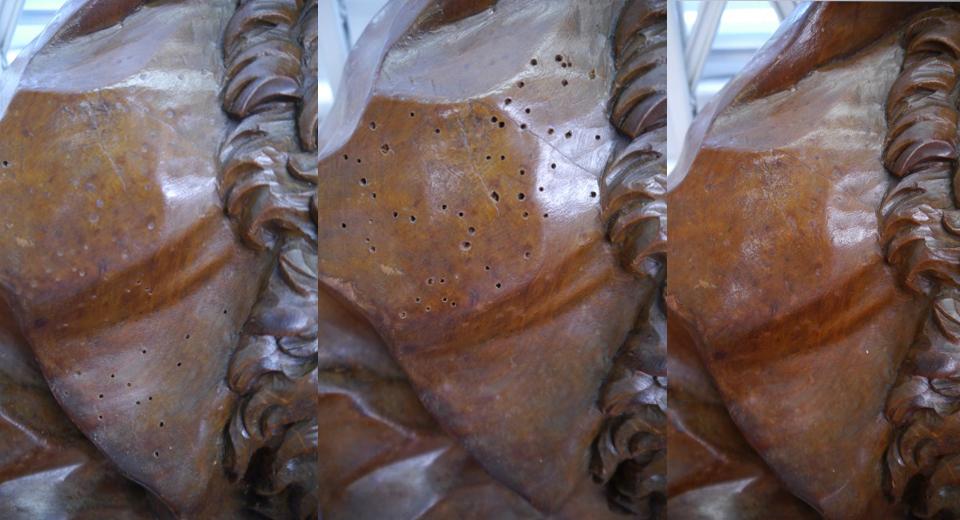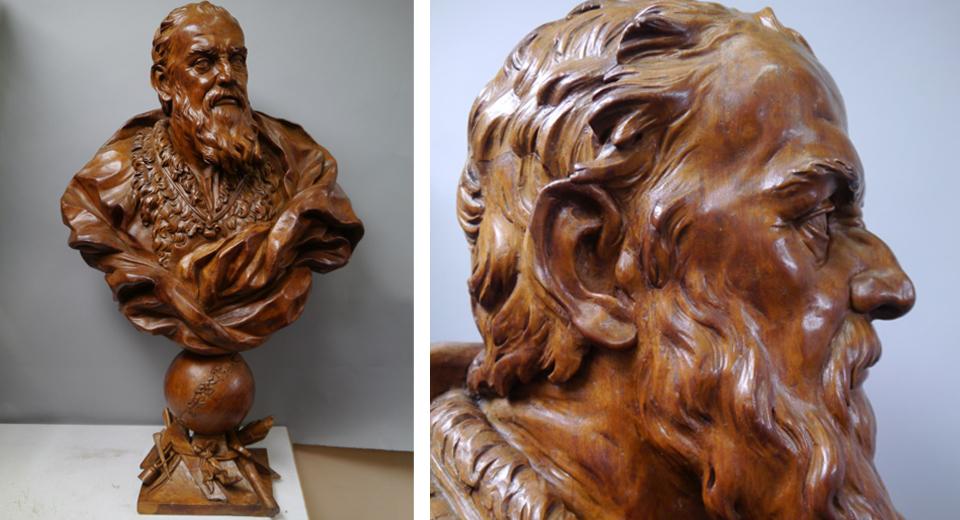Essential Information
| Location |
Queen's House
|
|---|---|
02 Dec 2015
In preparation for the re-opening of the Queen's House, to celebrate its 400th anniversary, there is an ambitious project to showcase some of our greatest treasures.
On the wish list for display is a beautifully carved pearwood bust of the Pisan-born experimental natural philosopher and astronomer Galileo.

However, as you can see from the images, Galileo had a severe case of spottiness and research and treatment were necessary to restore him to his former glory.
In the past the bust had succumbed to woodworm damage and it was the insect exit holes that had discoloured after previous treatment. It was discovered that the stopping wax previously used to fill the holes had a high level of carnauba wax, which is mixed to create a hard wax which acts as a durable filler. However, over time, as the solvents used to mix the wax evaporate, it effectively dries and the carnauba content reverts to a white powder coating. Therefore, the wax needed to be removed from every hole and a stable stopping wax reapplied and sealed with shellac.

This painstaking task was undertaken by Ilaria Cecchini, an postgraduate student from the City & Guilds London Art School BA (Hons) Conservation programme. The results are impressive and Galileo is looking much healthier.

For more information on the Queen's House refurbishment, follow us on Twitter